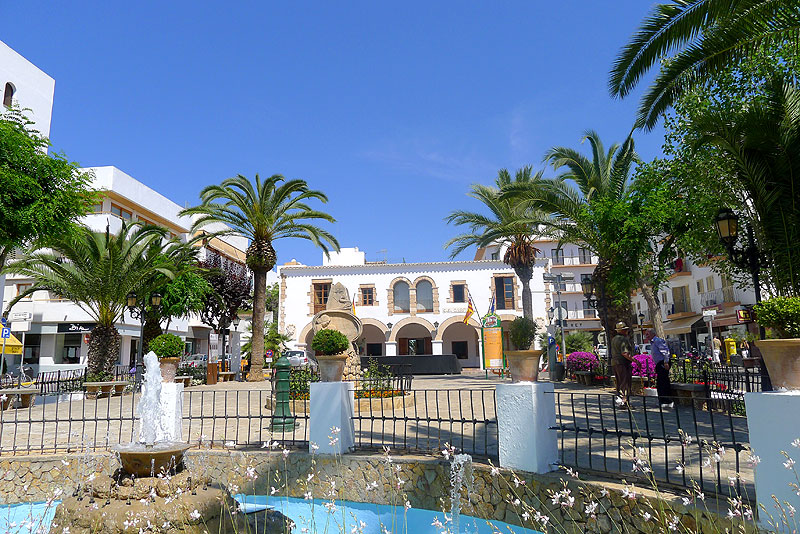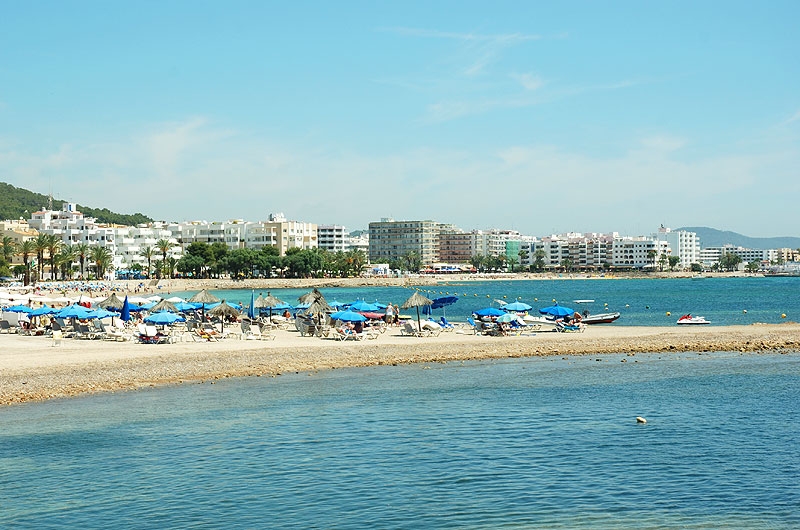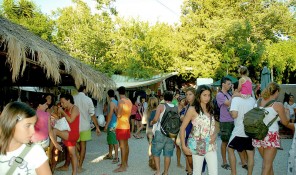If you approach the municipality from the direction of the capital town, you are immediately impressed by the view of a hill crowned by a church. This is Puig de Missa, a place which simply must be visited, where you can both admire the marvellous views of the whole town and find out about the local history and customs.
Before entering the town itself you will notice the remains of the Roman bridge – though it is not Roman because it was built much later – over the river, the only one in the Balearic Islands. In fact, Santa Eulària was of great importance to the whole island not because of its geographical size but because its river provided a means of turning the heavy stones of the flour mills in the times when bread was the staple food. The bridge saw a continual coming-and-going of country people carrying flour and other goods and this was the reason why the Pont Vell or “Old Bridge” was, together with ses Salines, a constant target for pirate attacks.
Walking along the cobbled streets at Puig del Missa -declared Historic Site by the Law of the Cultural Heritage of the Balearic Islands- you can enjoy the atmosphere of this small village, with its marvellous views, where nothing seems to have changed over time. Don’t miss looking inside the tiny cemetery, with its gates facing the sea.
The first, Calle Sant Jaume, has many shops, excellent restaurants, banks and pharmacies, and Paseo de S’Alamera, which meets Calle Sant Jaume at right angles, connecting the Promenade to the Town Hall by way of a charming boulevard that hosts a flea market in summer.
Nowadays the municipality has another major entrance, via the Yachting Harbour and the Promenade, where a large part of the local night-life and leisure activities takes place, in this seaside town which enjoys every modern facility. This is the location in which the Ibiza Convention Hall stands, an avant-garde building with huge fanlights, inspired by the lines of traditional Ibiza architecture. It also counts with many polyvalent rooms and a hall for more than 400 people. The design, by Jesús Ullarqui and Eduardo Pesquera, has been awarded by the Spanish Federation of Professional Congress Organisers as well as the Architecture Award Piedra’ 10 for its evocation of tolerance, freedom and cultural diversity.


















